Plants for an alpine slide: types and their names
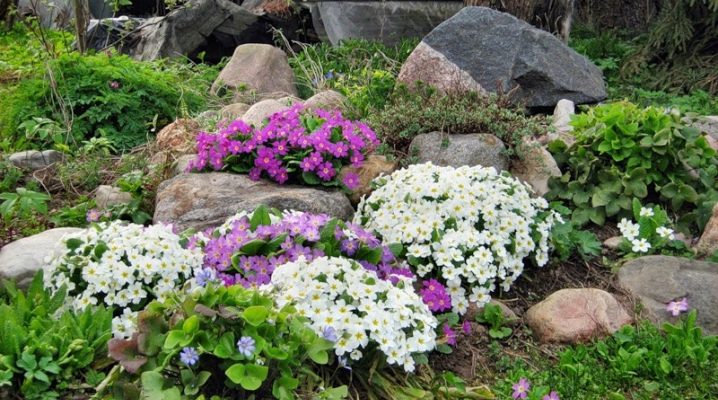
Alpine slide is an element of landscape design. This unique composition, as a rule, imitates a mountain landscape: a group of stones should rise in the center, terraces with various plants are formed on the slopes of the hill.

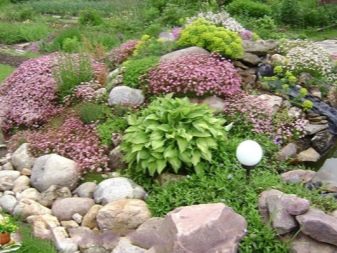
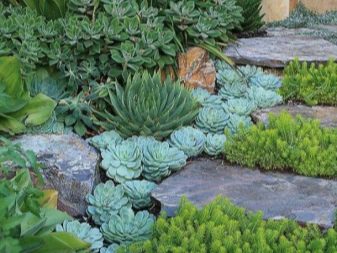
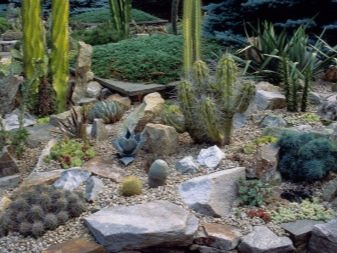
Features of the rock garden
A rock garden is a simple and unique way to recreate a piece of nature on your site. If the site is completely flat, then a rock garden (also called a rockery or stone garden) will give it an element of movement. In addition, rockeries are the perfect place to house exquisite alpine plants, as well as many beautiful, stunted plants that would otherwise go unnoticed.

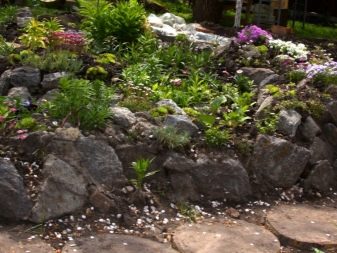
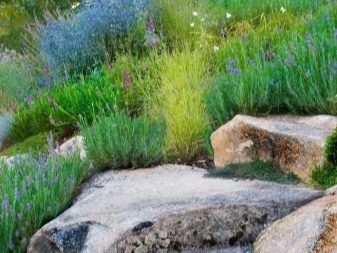
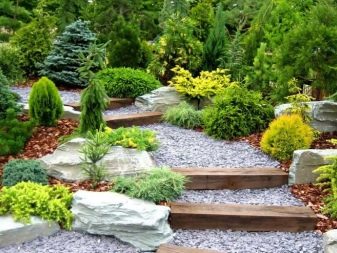
What plants are needed?
Most of the garden plants that are best for a rock garden are drought tolerant, require little fertilization, and rarely require any pruning. The only difficult task is constant weeding, but it can also be minimized by removing all perennial weeds from the place of the proposed location of the rock garden in advance. Naturally, the rest of the soil poured over the stones should also be free of weeds.
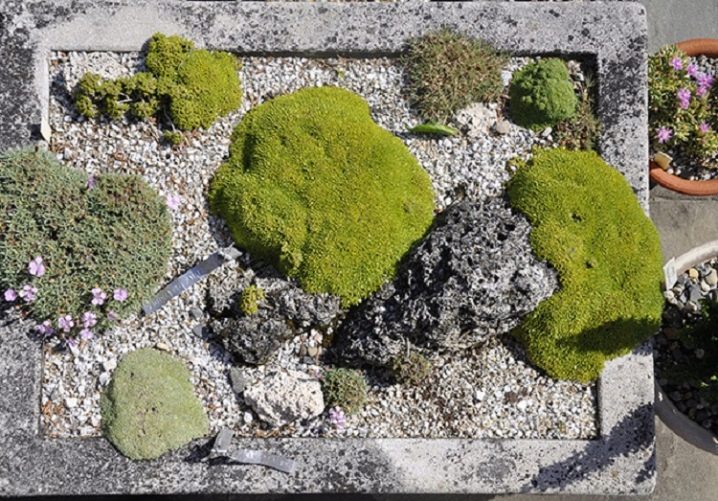
When choosing plants for rockeries, it is important to remember the existing conditions and choose the appropriate specimens.
For example, for rockeries located in a sunny area with rapidly drying soil, choose plants that need sun and increased drainage. If your planting area is so large that conditions on it can change - there may be places where the soil retains more moisture - group your plants accordingly. Plants blooming all summer long are best planted in warm and humid climates, cacti and other succulents are more suitable for dry climates, finally, if your site is located at a high altitude, you can consider a classic alpine garden.
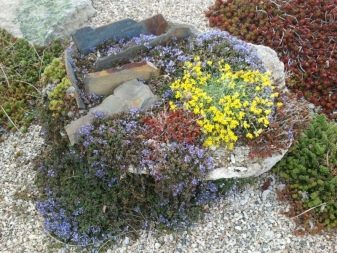
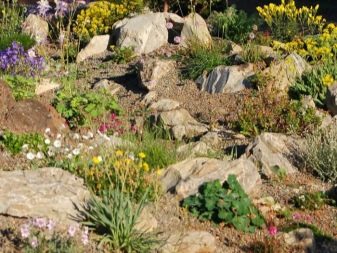

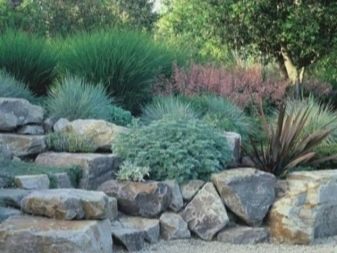
What to plant?
The list of plants is quite extensive. It is only necessary to take into account that stone gardens located in warm climates require some plants, and in colder climates others.
Flowers
It is best to choose low-growing, long-flowering garden plants. Fortunately, there is a huge selection of these colors.
Lavender
A natural choice for any rocky garden. Its gray-green foliage contrasts beautifully with its own flowers, as well as dark green grasses and other rock garden plants. Plants are placed at a distance of 30 to 45 cm from each other in an open, sunny place with well-drained, slightly alkaline soil (pH 6.7 to 7.3). Sand must be added to the soil before planting, which is vital as lavender does not tolerate excessive soil moisture.
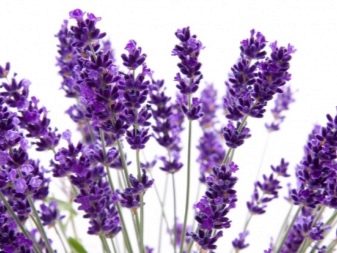
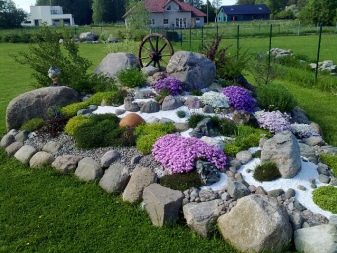
Lavender blooms almost all summer; to maintain continuous flowering during the warm season, it is necessary to remove the faded flowers. In the spring, when the plants begin to grow, the lavender can be pinched slightly for better branching.
Remember lavender needs good drainage and good air circulation. Do not overfill, let the soil dry before watering. In warm and humid conditions, fungal diseases can develop and the leaves turn brown. To minimize this problem, cover the base of the plant with pebbles or sand to speed up evaporation. For better air circulation, keep the plant sparse.
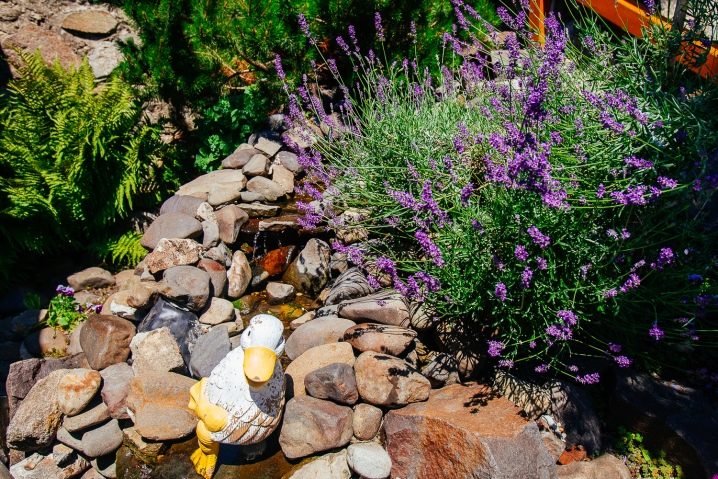
Iris
Hardy and unpretentious, with bright colors, has been used in stone gardens for many years. By choosing from a variety of varieties and varieties of iris, it is possible to extend their flowering season from spring to early summer, sometimes with re-flowering.
There are two main types of irises that thrive in northern climates: bearded and Siberian. However, there are less common names worth growing too, such as Iris reticulata (dwarf iris), Iris pallida (sweet iris), Iris pumila (rainbow nut), Iris cristata (crested iris), and shade tolerant Iris tectorum (Japanese iris).

Bearded irises planted in full sun with plenty of air. Crowding or shading by other plants can negatively affect iris bloom and also contribute to iris disease. Irises grow best in rich soil that has been supplemented with organic matter such as compost, manure or peat. Well-drained soil is important to avoid root rot of the fleshy rhizome.
The soil under the bearded irises should be kept constantly moist, but only from spring until the end of flowering. After flowering, the plant goes into a dormant period, excessive watering at this time can cause rot. Fertilize bearded iris in early spring. Use nitrogen fertilizer, then water the plant well. The fertilization is repeated when the stem of the flower appears.
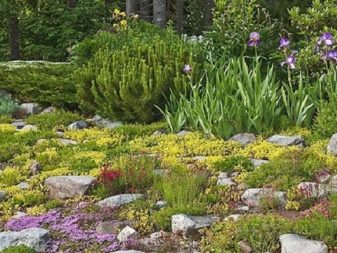

Irises should be carefully trimmed, leaving as much green, healthy leaf tissue as possible. Do not be afraid to damage or deplete the plant, its development next year is determined by the ability to produce and store food during the current season; the more yellowed leaves leave, the better. After a real frost, it is necessary to cut off all the foliage.
Siberian irises come in different shades: blue, lavender, white or yellow. After flowering (late spring to early summer), the foliage remains attractive throughout the season. Siberian irises grow in much the same way as ground cover plants, displacing weeds. The best place to place them is in the sun. Siberian irises need constant moisture throughout the season with periodic deep watering.
Removing the faded flowers stops seed pod formation, but the seed pods of Siberian irises are attractive on their own. They can be left on individual plants for additional autumn and winter decoration.
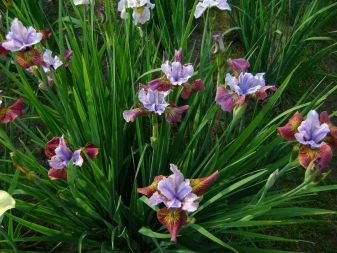
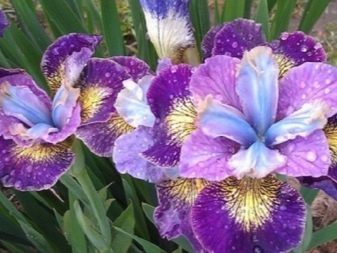
Krylotychinnik
(Aethionemas or Persian Candytufts) is an excellent plant for a rock garden. It will grow in any soil other than heavy, moist clay. These small plants with tiny blue-green leaves are extremely attractive even if they haven't bloomed yet. Aethionema caespitosa forms a dense carpet only 5 cm high; A. grandiflora is taller, up to 20 cm, with caps of beautiful pink, very fragrant flowers that retain their decorative effect for a long time; Aethionema cordifolium is the only member of this group that reproduces by self-seeding. All krylotychinniks bloom from mid-spring to late summer.
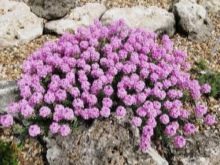
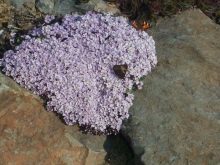
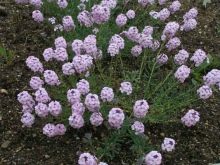
Onion
Not all rock garden lovers know that some types of onions, for example, Allium senescens glaumum, can be an excellent decoration. This onion has flat, bluish leaves that twirl in one direction, making it very decorative. It blooms in summer with lavender pink flowers. Other bows: A. cyaneum with purple-blue flowers, A. moly with golden-yellow flowers and A. flavum, which blooms in summer with charming straw inflorescences.
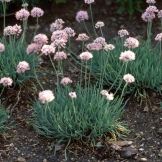
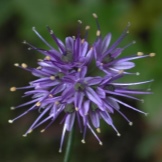
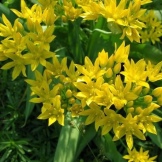
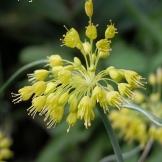
Shrubs
For an alpine slide, mainly creeping shrubs are planted.
Horizontal cotoneaster
As the name suggests, this shrub grows horizontally. The plants have small, rounded leaves that range in color from reddish orange to burgundy in autumn. The flowers are light pink, after flowering they give later shiny red berries. The arrangement of the branches is such that the whole plant looks like a "herringbone". It reaches 90 cm in height and 2.5 m in width.
These shrubs offer a perfect example of the year-round decorativeness of the plant. In spring they bloom with light pink flowers, in summer their glossy green leaves create an unusual pattern. But the cotoneaster is especially attractive in autumn due to foliage and berries. Red berries remain on the branches for a long time and look attractive even in winter. True, by mid-winter they can show signs of fading and discoloration.


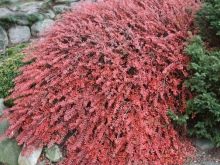
Barberry
Hardy and tender shrub, evergreen or deciduous. Some species are famous for their beautiful and fragrant flowers, while others are more attractive when covered with brightly colored fruits at the end of the year.
These shrubs are capable of growing in a wide range of soils, from sandy to loamy. They naturally take on a beautiful shape without the need for regular pruning. Although some species tolerate moderate shade, the best results are obtained in sunny locations. Some species create very good hedges, in particular B. Darwini, B. Stenofill, B. Thunberg, so they can be used in the country. B. Thunberg's dwarf forms (Box Barberryu Red Pygmy) can be planted in a flower garden
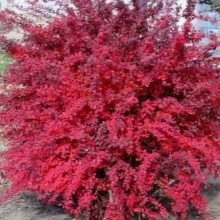
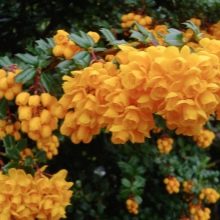
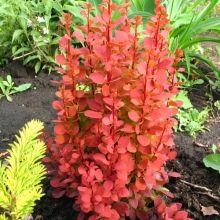
Those barberries that retain their leaves during the winter are among the most beautiful evergreen shrubs. Barberry Darwin, a straight, beautiful shrub, has small, shiny, dark evergreen leaves and orange fragrant flowers in late April and May; fruits are dark purple in color with a gray-blue flower. A relatively new Chilean barberry is B. linearifolia, which resembles B. Darwinia, but has larger flowers of richer color. There is a hybrid of B. Darwinii and B. linearifolia, it has orange flowers and is very showy.
Red barberries are especially attractive in autumn and winter. B. Wilsonae is a dense shrub 90 cm high with thorny branches and small leaves; the flowers are yellow, and the coral-red fruits in autumn are its main attraction. Its Stapfiana variety is also very beautiful in autumn and winter thanks to its red berries. The Thunberg barberry is especially beautiful because of the rich scarlet and orange color of the leaves in autumn. The atropurpurea cultivar has purple foliage; it is a good dwarf shrub for rockeries.

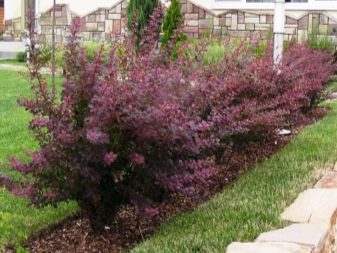
Groundcover
In this capacity, various types of saxifragaceae are very popular. These are creeping perennials with round green leaves, on the back the leaves are pink with white veins. S. umbrosa has tiny pink flowers on red stems, while S. stolonifera has white flowers.
Horny Goat Weed (Epimedium)
A low-growing perennial, which is also often used as a ground cover in mountain gardens, forms a mass of leathery leaves with heart-shaped leaves. The tiny waxy flowers of Epimedium range in color from shades of white and yellow to pink and red.
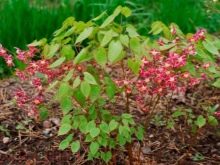

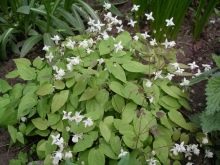
Clefthoof
(Asarum caudatum) - has heart-shaped leaves and grows well in foggy areas. Fills gardens with a scent reminiscent of ginger.
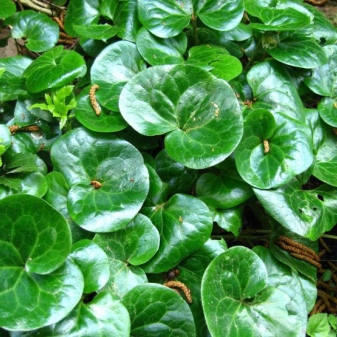
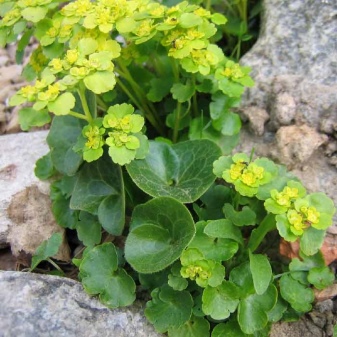
Creeping sedum (Sedum)
It is one of the most versatile, drought tolerant and easily growing perennials that can be used as a ground cover. Known for their ability to spread quickly, these low plants completely drown out weeds. If they are not waterlogged, then they rarely suffer from any diseases or pests. They are an ideal choice for gardens in hot and arid climates, but they also work well almost everywhere - as long as they are well drained.
Most creeping sedums prefer full sun but tolerate partial shade.
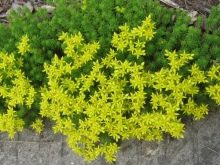
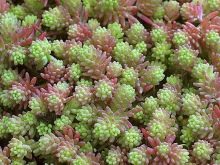
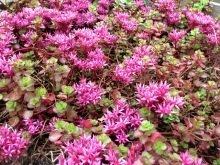
Thyme
A fragrant, fast-growing ground cover 5-7 cm in height with small leaves. In early summer, it bears small, delicate, whitish flowers. It can grow between the steps of the garden path. Grows in full sun and well-drained soil. It can be used to quickly fill in gaps between stepped stones or rocks.
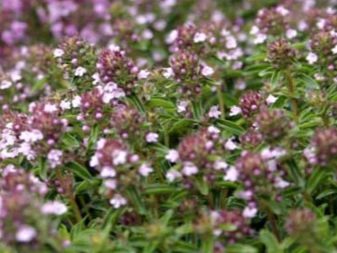
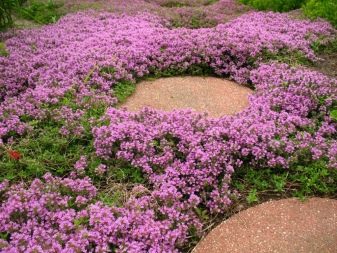
Golden Oregano (Origanum vulgare 'Aureum')
Another hardy and unpretentious groundcover that retains its golden color best in cold weather. Golden oregano has tiny, rounded leaves that are 1 to 2 cm wide. Its small lavender or purple flowers appear in early summer and last all summer. Combine it with other oreganos, or plant next to lavender (Lavendula spp.), Rosemary (Rosemarinus officinalis) or Imperata cylindrica 'Red Baron' for a variety of shades of gold.
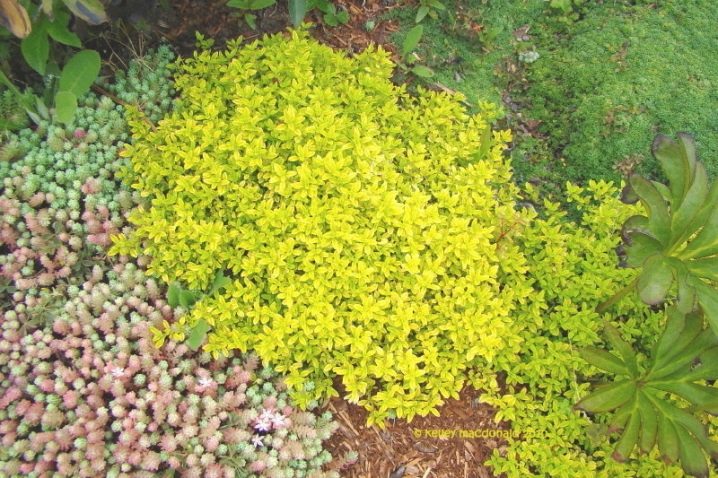
Blue Star (Laurentia fluviatilis)
Originating from Australia, it boasts delicate blue, star-shaped flowers that appear during the spring and summer among small, bright green leaves. The blue star forms an attractive cover under the trees and between the stepped stones.
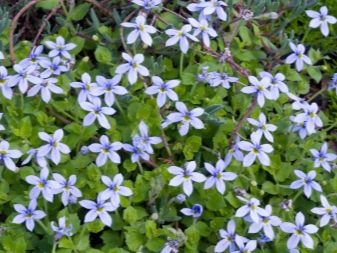
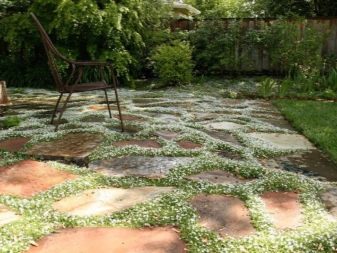
Mazus reptans
A plant for the impatient gardener, It grows very quickly, forming a dense carpet. In spring, tiny flowers resembling shards give the effect of a miniature flower garden. Blue or white flowers with a yellow spot rise 5-7 cm above the foliage. Use this hardy perennial where aggressive qualities are required, such as between steps or to cover large areas.
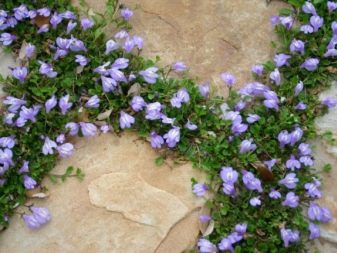
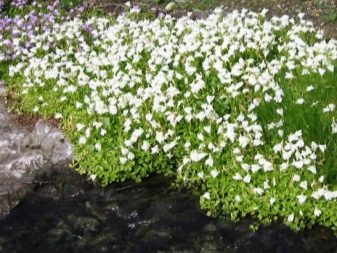
Herbs
In terms of their visual impact, rare plants can be compared to ornamental grasses. Do not confuse ornamental plants with lawn grasses.
Ornamental grasses are intended to be grown, not mowed, and most are not used as ground covers.
Feather grass
It is widely distributed in gardens and is very useful in many ways. Designers use these herbs because of their shape, color scheme, and also due to the long decorative period, from early summer to mid-winter. Most feather grass varieties are perennial, and they all prefer full sun and are rarely found in the shade in their natural habitats. Steppe feather grass (Stipa) is a thin, ash-colored grass. Mexican feather grass (S. tenuissima) is a bright green tender grass that grows up to 90 cm in height.
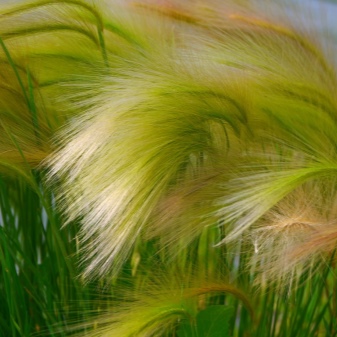
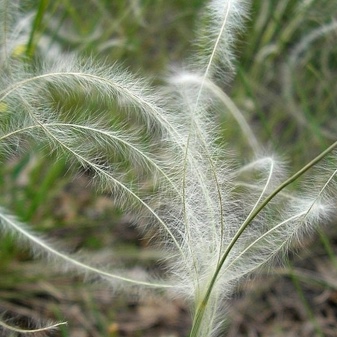
Reed Grass (Calamagrostis)
Another ornamental grass for the alpine slide, which has a leaf-like shape similar to feathers, grows to the same height as S. tenuissima. C. acutiflora "Karl Foerster" differs in that there are small pink flowers at the top of the stems.
This reed grass looks like a work of art and provides an excellent contrast to low shrubs and perennials. In addition, C. "Karl Foerster" is one of the first grasses to grow in spring. Flowers change color during the season, remain on the plant until the snow. The plant sways gracefully in a light breeze. Mass planting C. "Karl Foerster" on a windy day looks very impressive!
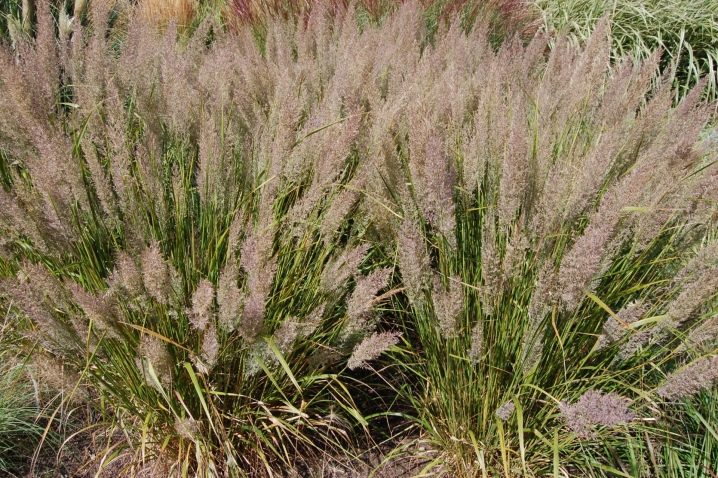
Blue Oat Grass (Heliptotrichon sempervirens)
It looks like a miniature fountain with tightly packed leaves that gently unfold upward and bend downward at the tips. This herb adds a wonderful decorative element to rock gardens. Its homeland is central and southern Europe, where it is found in rocky pastures on calcareous soils. It works best in light, well-drained soil and prefers a sunny location. Helperotrichon sempervirens can be used as a stand alone plant or as a kind of "river" in pebble gardens. This herb looks amazing in any gray leafy scheme, among lavender, artemisia and the like. It also associates well with other ornamental grasses.
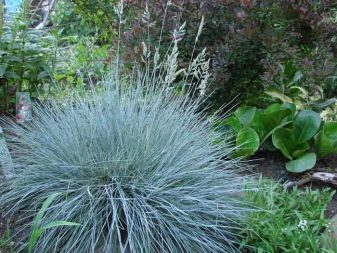
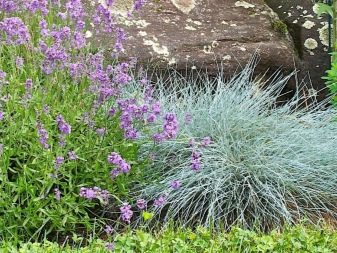
Conifers
In rock gardens, coniferous evergreens are often used.
Mountain pine Pinus mugo
An extremely attractive dwarf plant. It should be clarified here that dwarf conifers are not necessarily small, they often just grow slowly, only a few centimeters per year.Pinus mugo has good strong branches, green shoots that gradually turn brown, and a scaly gray bark that is especially attractive in winter light or in the glow of the sunset.
This plant is of interest all year round.: both in winter, when it looks like snow dust, and on hot sunny days, when its resinous buds exude a wonderful scent. The Pinus mugo shape looks more like a shrub than a tree. It is this feature that makes P. mugo ideal for the modern garden.
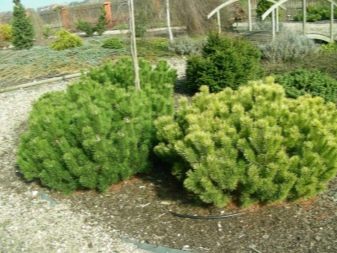
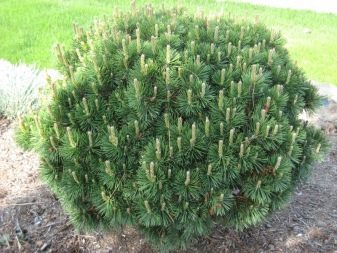
Juniper "Mint Julep"
The juniper family offers a wide variety of hardy, low-growing evergreen shrubs for landscaping your garden. It is an evergreen shrub with dense, upright branches clad in sharp-pointed bright green needles. Flowers are not decorative. Blue berries are formed from spring to late winter. Prized for its lustrous green foliage and original fountain shape.
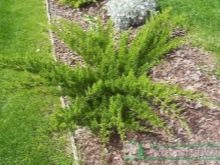
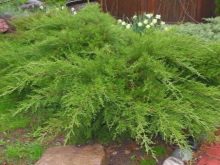
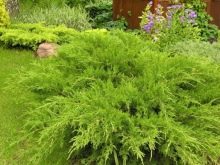
Layout scheme
The arrangement of plants on an alpine slide should look natural. To achieve this, look to nature. Observe the rocky terrain with wild plants growing on it.
Make a design plan. Consider the flowering time of the plants, their color and the form of growth.
When planting, do not arrange the plants in rows or columns, avoid symmetry.

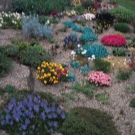
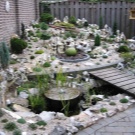
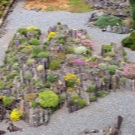

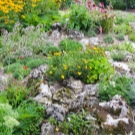
Stick to your chosen design theme. When you go to the nursery, you find it tempting to choose a wide variety of plants. Resist this temptation! Concession to him will lead to the creation of a hodgepodge rather than a single mountain image. In addition, too diverse a mixture of perennials narrows the space.
If you are new to mountain gardens, skip purchasing rare plants. They may require complex structures for good drainage. Drainage is a critical success factor when growing alpine plants. In the presence of low places where water stagnates even for a short period, the results can be completely discouraging for you. Therefore, start with the most unpretentious plants, and as you gain experience, add others, more exotic.

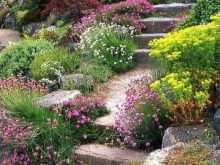

Keep in mind that structures such as stone walls can also be used for planting plants. Some specimens, for example, Horny Goat Weed, are indispensable for planting in the cracks of stone walls. Vibrant flowering cascading specimens like yellow alyssum are ideal for planting on top of walls, allowing them to spread over the wall. The effect of these plantings is to soften the hard lines of the wall.
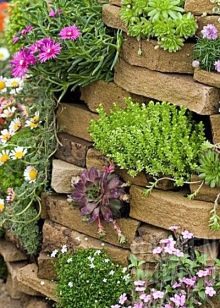
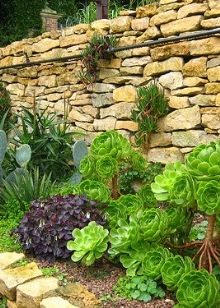
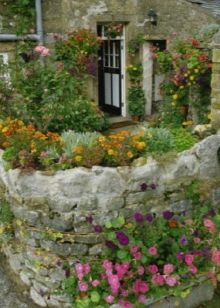
Beautiful examples of landscape
- Large stones, well chosen and correctly positioned, are the main beauty of the stone garden.
- Mazus reptan perfectly fills the space between stones.
- Golden creeping thyme grows rapidly around the stones. Its leaves give off a lemon scent when you run your hand over them.
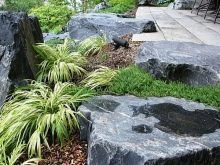
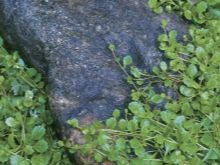
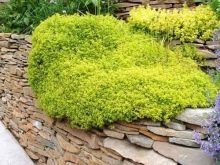
- Ideal garden plants include seedlings, succulents, and herbs like oregano. Many of the plants in the mountain garden are those that grow abundantly in mountainous areas.
- Lavender plants have a neat shrub shape. This lavender grows with orange poppies in a rocky garden where they are well-drained.
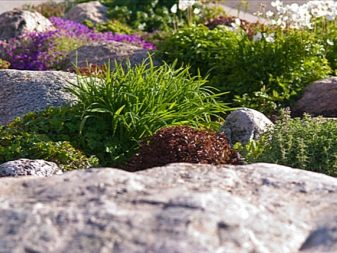
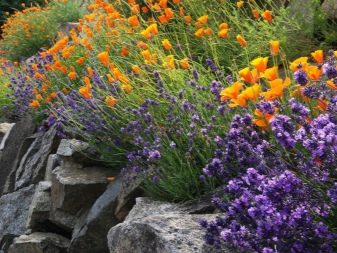
Some interesting tips for creating an alpine slide with your own hands can be found in the following video.



































































The comment was sent successfully.